Brush your teeth properly: Dental floss, toothbrush and co.
Brushing your teeth depends on the right technique. On this page, we would like to give you some tips on how to brush your teeth as effectively as possible and thus prevent tooth decay, periodontitis and other diseases.

Updated on 26.07.2024
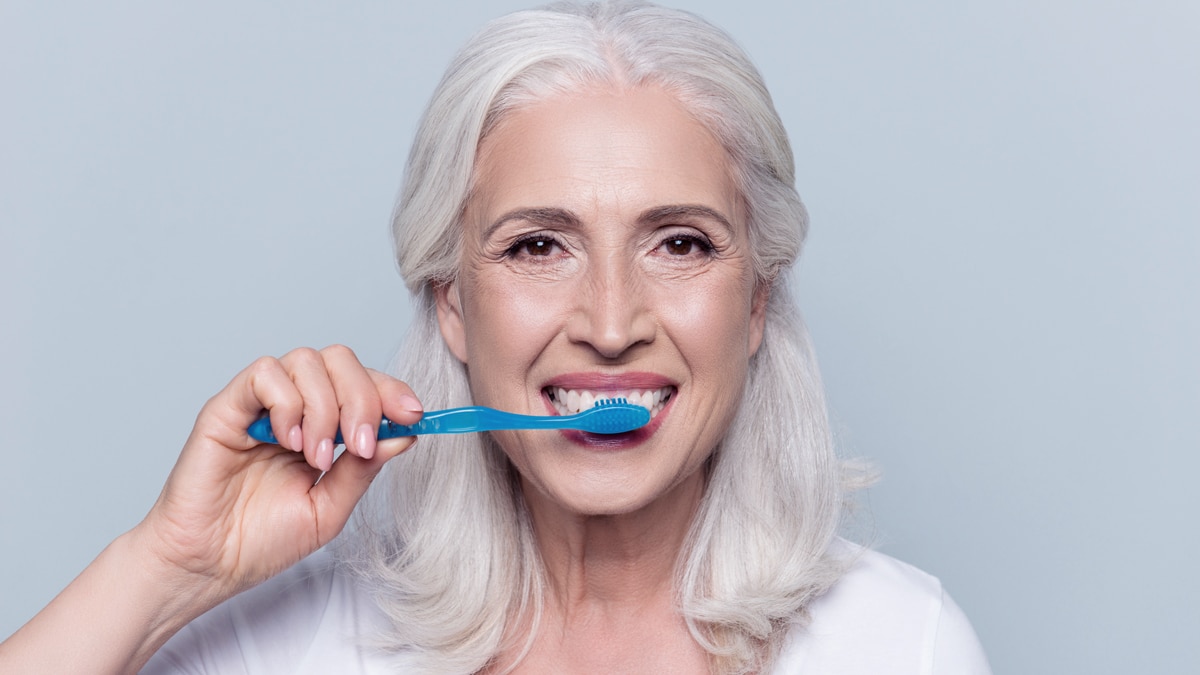
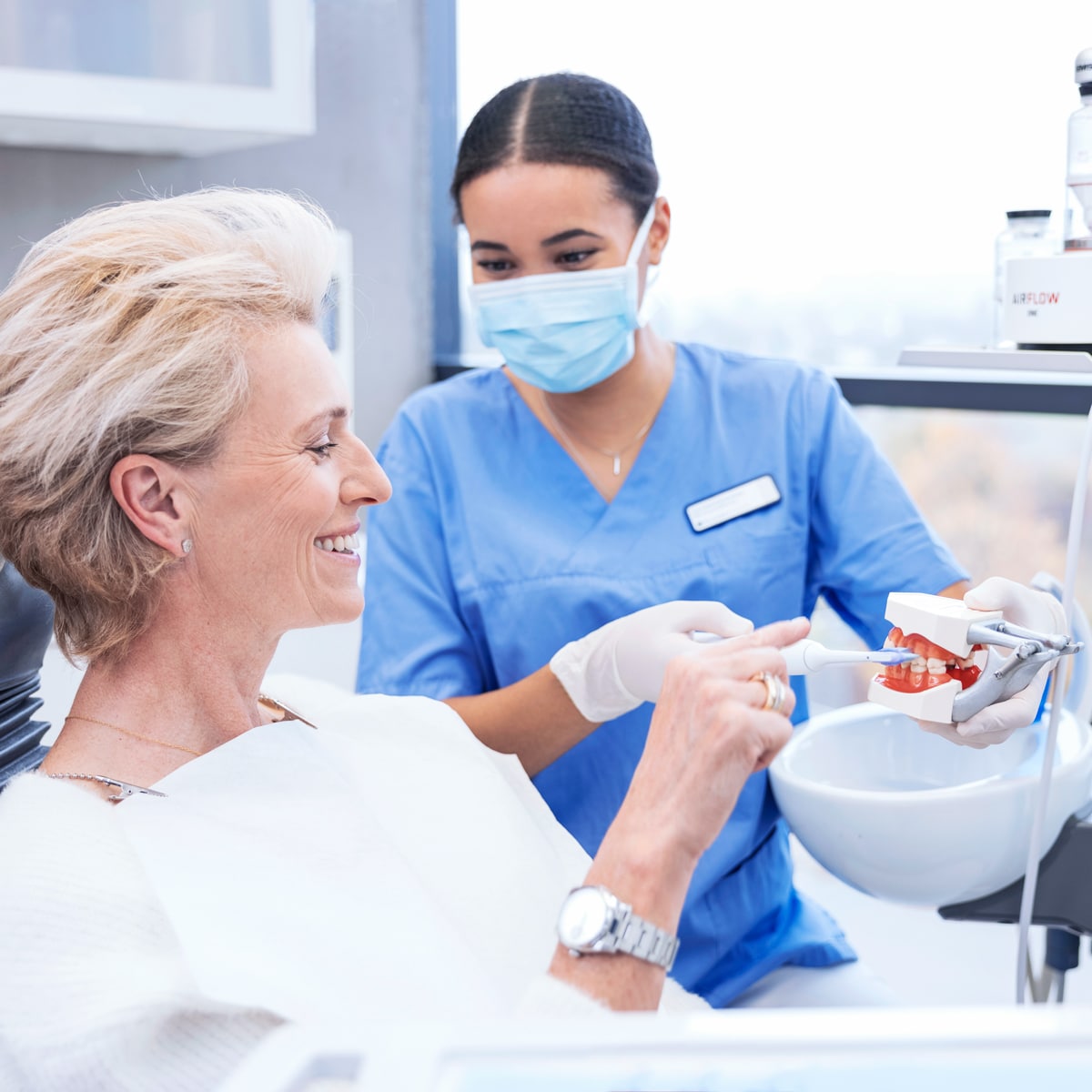
The Airflow One device from EMS gently removes biofilm and discoloration without causing pain. It shortens the treatment time and improves patient comfort.
Toothbrushing techniques are clearly demonstrated on dental models to show patients how to use toothbrushes and especially interdental brushes correctly.
How do you brush your teeth properly?
Brushing our teeth is a much-discussed topic and has been taught to us since early childhood. But what is the correct technique for brushing teeth – after all, I want to be able to eat with my teeth for the rest of my life.
The teeth are at the center of the look. They should be white, in a row, surrounded by pink, healthy gums. To meet these requirements, the right choice of cleaning utensils and a correct dental care technique helps, which should ideally become a habit in everyday life.
Tip: For an effective brushing technique, we recommend using interdental brushes and an ultrasonic toothbrush, which make brushing very comfortable!
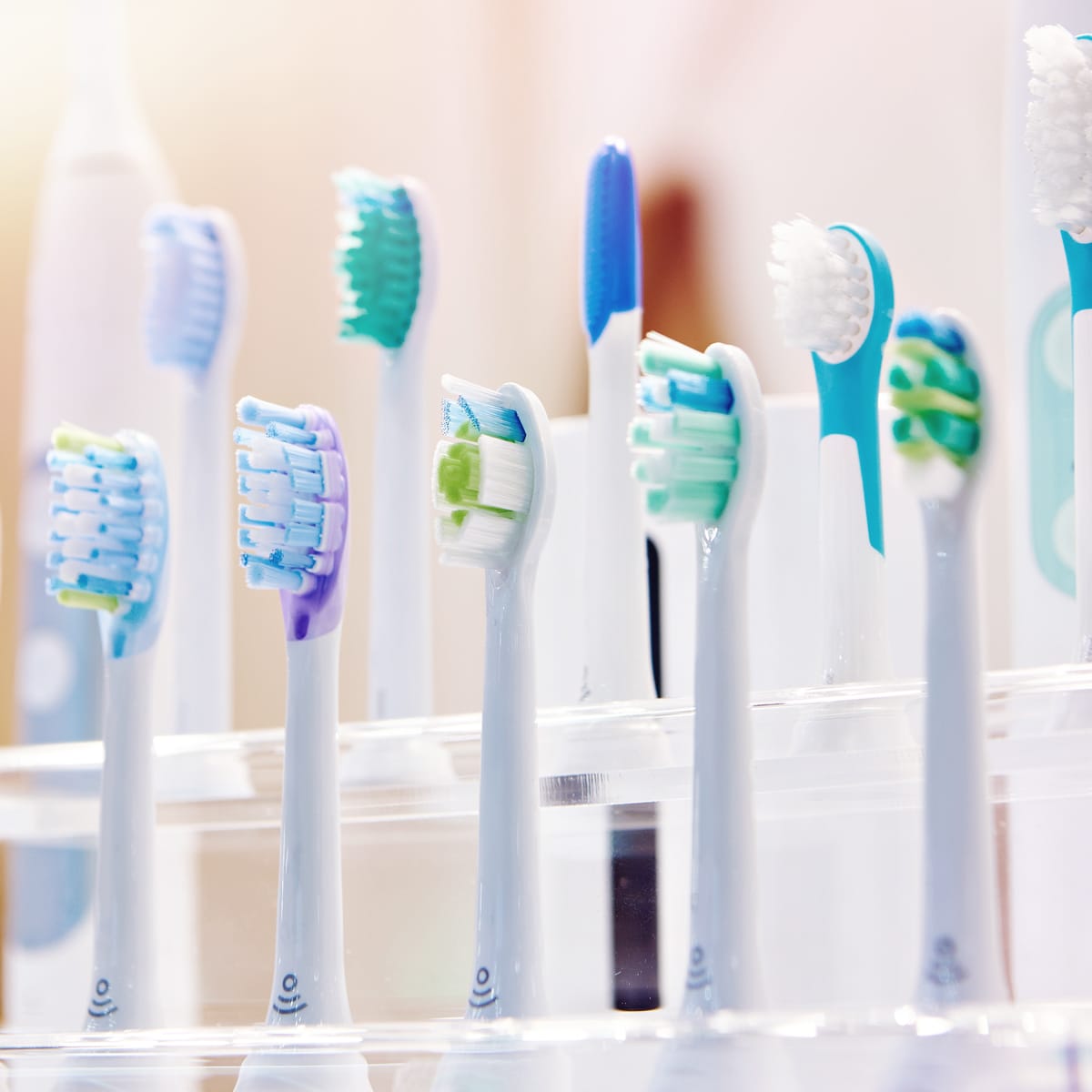
Various toothbrush attachments are specially developed for different needs, such as attachments for sensitive teeth or for thorough plaque removal.
There are attachments with special bristle arrangements that ensure optimum cleaning of interdental spaces and hard-to-reach areas. In general, the softest bristles should always be used.
The right toothbrush
For lifelong dental health with beautiful teeth, a combination of different toothbrushing utensils is required. These are easy to understand. One of them is a toothbrush, which should be gentle so as not to injure the gums with its bristles. Nowadays, a toothbrush can be used electrically and even with ultrasonic vibrations. As dentists and dental hygienists, we recommend this. This is because cleaning the teeth of plaque and bacteria requires the toothbrush to be guided. An electric toothbrush has been scientifically proven to do this better than a normal toothbrush.
The toothbrush should: have a short brush head and rounded, soft brushes so as not to cause injury
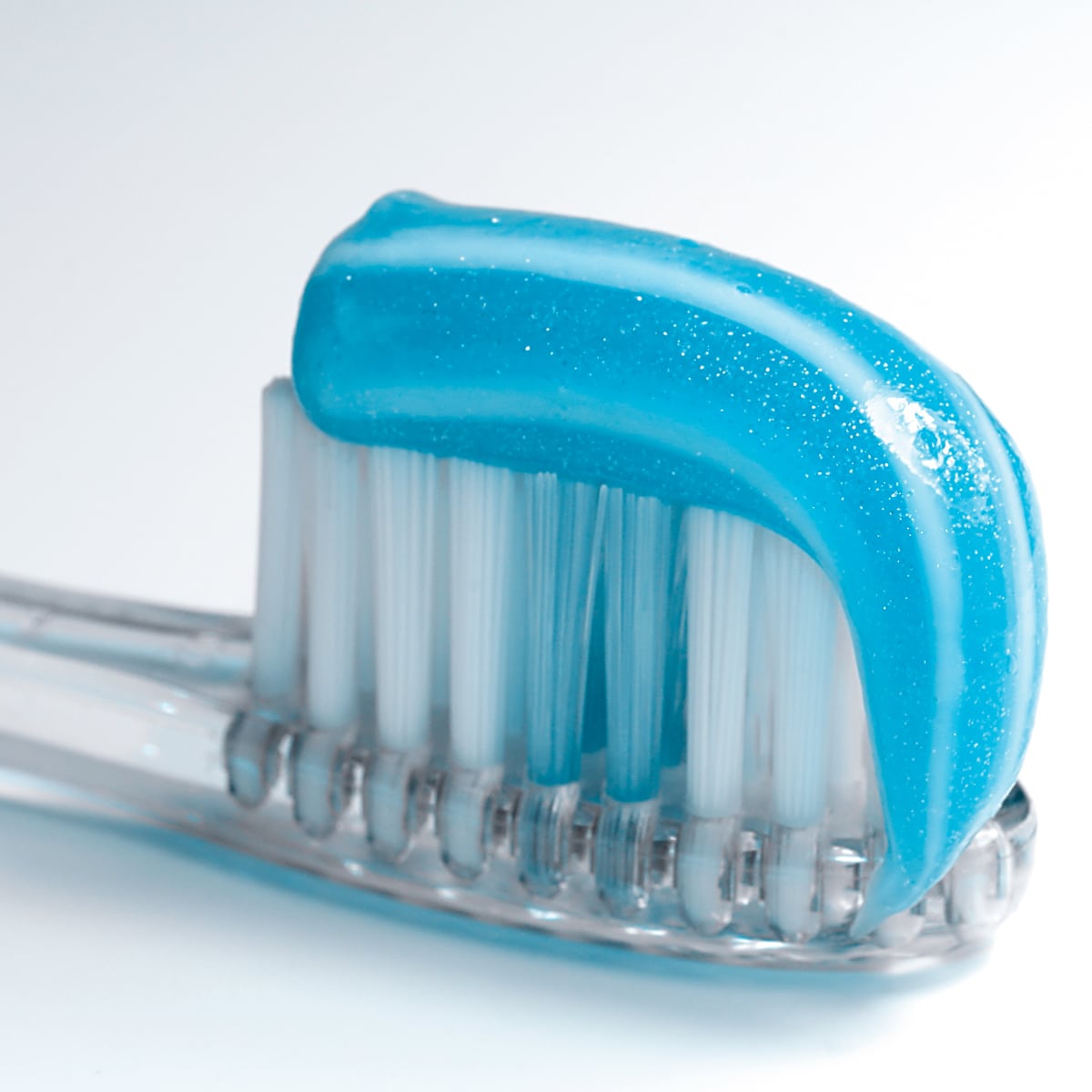
There are various toothpastes that are tailored to different needs, such as toothpastes for sensitive teeth, for enamel repair or for caries prevention. In principle, toothpastes containing fluoride should not be avoided by adults.
Which toothpaste should I use?
A good tasting and dentally useful toothpaste helps to treat teeth correctly. Good-tasting because otherwise a positive habit of brushing teeth cannot develop. Unfortunately, when it comes to ingredients, the press nowadays is too one-sided and headline-grabbing. Fluorides, which are added to toothpaste, are regularly in the spotlight. These fluorides are extremely important to protect the outer layer, the tooth enamel, from acid attacks by bacteria. The press too often confuses fluorides with fluorine. This is easy to explain. Fluoride is found in air and water and is a healthy trace element, whereas fluorine is a gas, which is toxic and has a strong odor. This similarity between the two words often confuses patients. To make this confusion even clearer, sodium chloride is vital in our diet. Chlorine, on the other hand, is a toxic gas like fluorine.
The toothpaste should: contain fluoride. This serves to prevent tooth decay. Do not use so-called whitening toothpaste, as such products cause excessive tooth abrasion and thus damage the tooth.
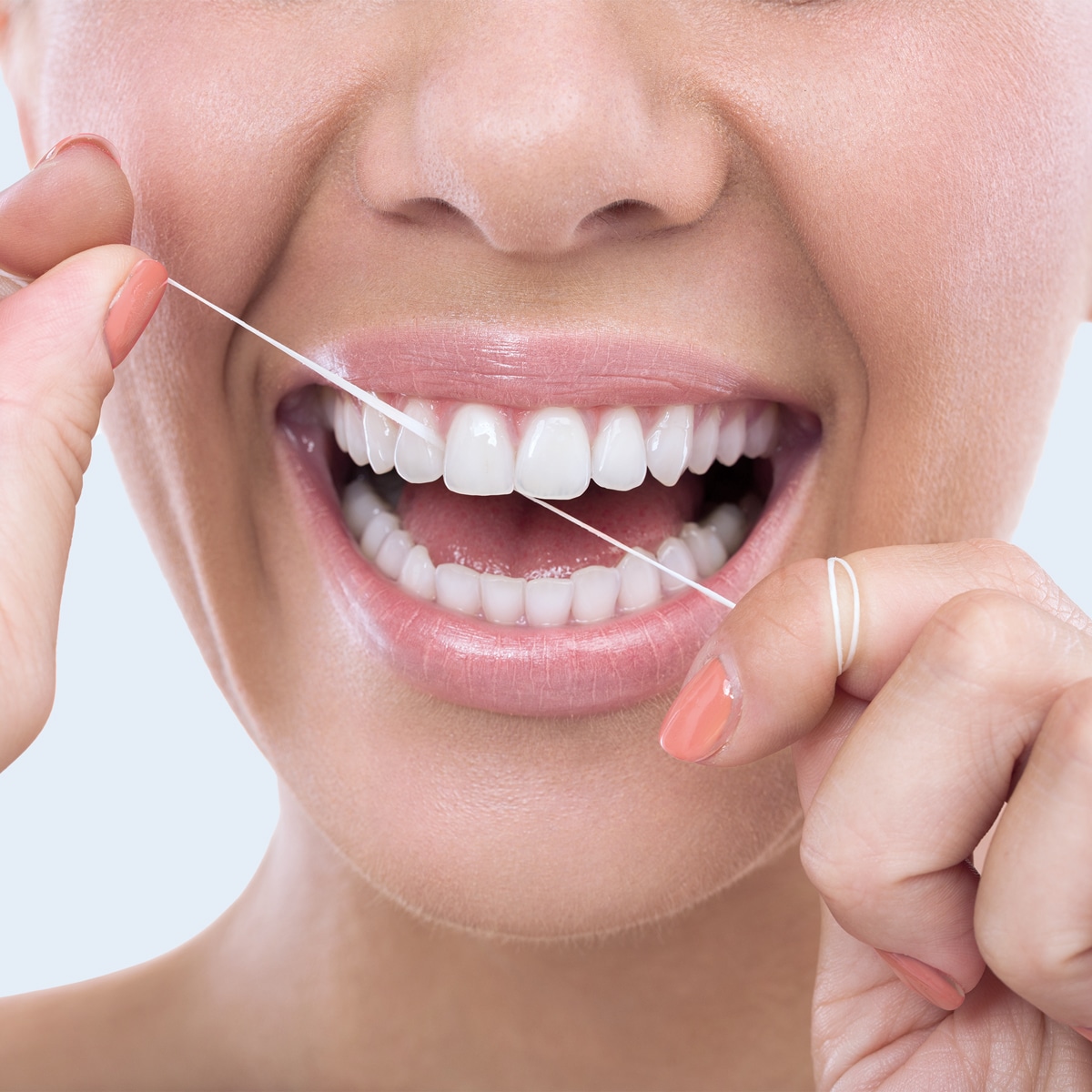
Flossing removes plaque and food debris from between the teeth, which is difficult to reach with a toothbrush.
The correct use of dental floss requires that it is gently guided between the teeth and secured in a C-shape around each tooth to thoroughly clean the tooth surface.
The correct use of dental floss
Another instrument for cleaning the teeth is dental floss (unwaxed or waxed dental floss) and interdental brushes (interdental brushes). Dental floss has a clear disadvantage compared to interdental brushes. It is often pulled through the interdental spaces with too much force and “bangs” on the gums. This can injure them. Bacteria then cause inflammation. Gum injuries are not the only problem.
The gums also assume that they are superfluous in this area due to the impact of the dental floss and consequently retract. This causes, among other things, the symptoms of receding gums with the sensitive, familiar open tooth necks.
Here’s how to use dental floss correctly:
Read more
- Take a 40-50 cm long floss thread.
- Wrap it around both middle fingers a few times and support yourself with your thumb and index finger.
- Now use both index fingers to guide the dental floss into the interdental spaces.
- “Hug” the tooth and move the dental floss up and down.
- Guide the dental floss around the neighboring tooth in the same interdental space to ensure that both tooth surfaces are cleaned.
The toothpaste should: contain fluoride. This serves to prevent tooth decay. Do not use so-called whitening toothpaste, as such products cause excessive tooth abrasion and thus damage the tooth.
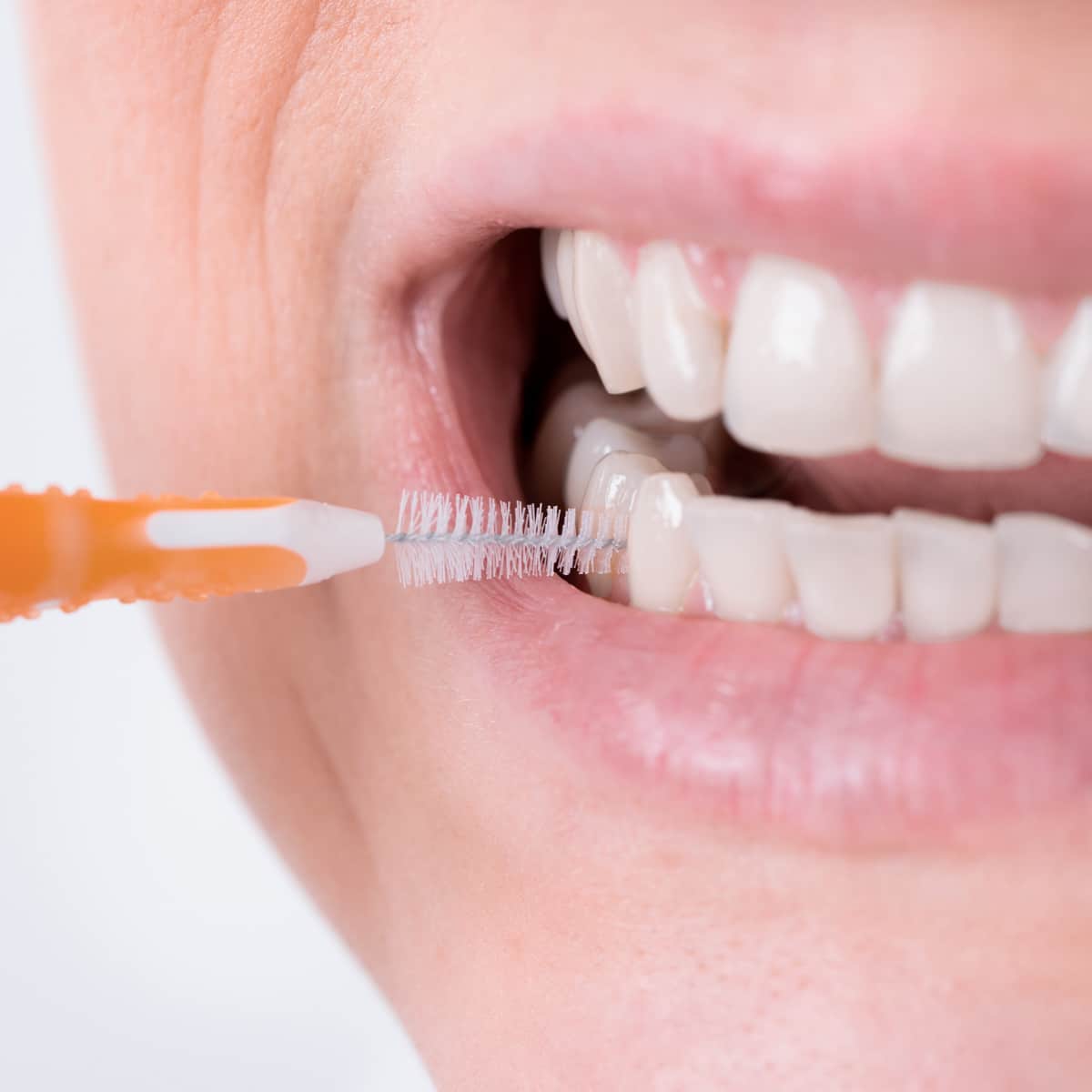
For correct application, the brush should be carefully inserted into the space between the teeth to ensure thorough cleaning.
The use of interdental brushes helps to remove plaque and food debris from the spaces between the teeth that are inaccessible to the toothbrush.
Using toothbrushes (interdental brushes) correctly
Interdental brushes, on the other hand, are gentler on the gums. They also have the advantage of retracting their bristles like an umbrella in the anatomical retraction of the teeth in the interdental space and also cleaning these retractions of plaque. This is the decisive advantage of interdental brushes. If these spaces are not cleaned, it is highly likely that caries or periodontitis will develop. In dental hygiene, dental floss is only recommended for interdental spaces where the brushes cannot get through.
Here’s how to use interdental brushes correctly:
Read more
- Interdental brushes are a very good alternative to dental floss for large interdental spaces (orthodontic appliances, implants, pontics)
- You can have the correct size professionally determined by our dental hygienists.
- Applications only in front of the mirror
- Insert the brush head into the interdental space and move it back and forth
- Rotate the brush slightly for wide interdental spaces
- Change brushes every 2-4 weeks

“Proper daily cleaning of the teeth is the basis for all dental health. We are happy to help you repair any damage to your teeth. We are particularly pleased when you maintain our crowns, inlays and implants with the right care. At Dr. HAGER | Zahnärzte, we try to help our patients with the best tips for good dental care. Because our services only last a long time with your care.”
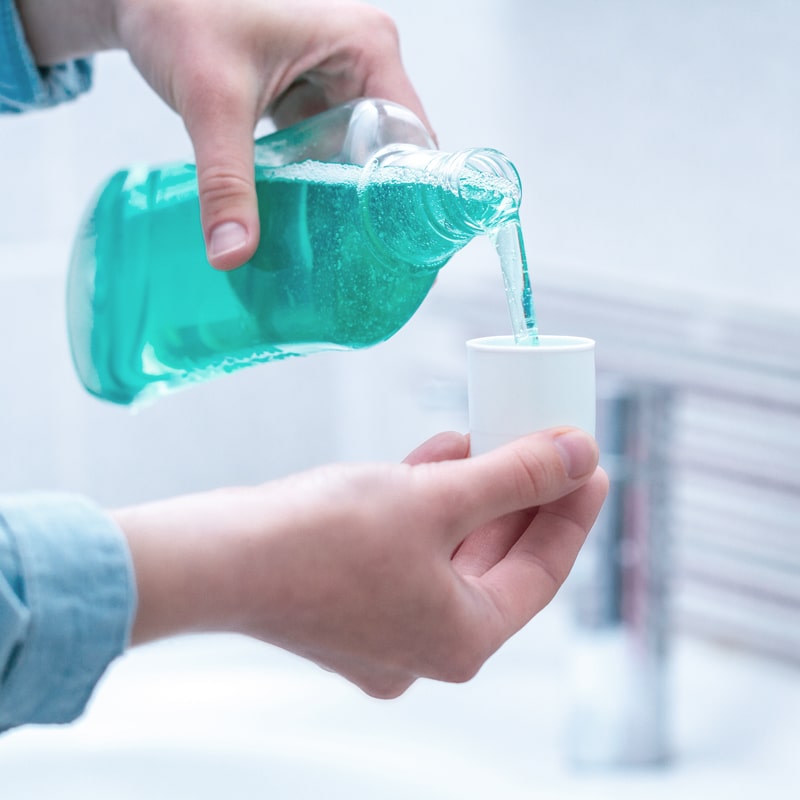
Mouthwash - and why we don't recommend it
For further dental care, our dental hygienists recommend not using mouthwashes. These have the disadvantage that generally “good” bacteria are primarily removed and “bad” bacteria are given even more space to spread.
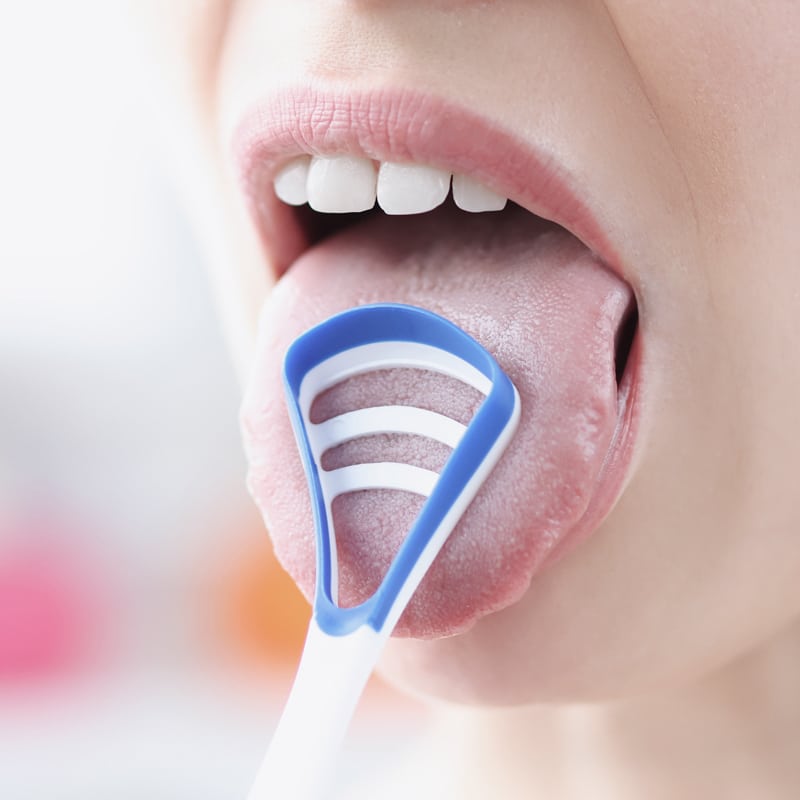
For correct use, the tongue cleaner should be pulled gently from back to front over the tongue with a little pressure to effectively remove
the deposits.
The use of tongue cleaners removes bacteria and debris from the surface of the tongue, which helps to improve oral hygiene and reduce bad breath.
The tongue cleaner
A tongue cleaner helps to remove plaque from the tongue. This should be done gently, as there are a number of useful glands on the tongue, e.g. for transmitting taste to the brain.
Advantages
- Reduces tongue coating and thus leads to reduced bacterial and tongue coating.
- Reduces bad breath.
- Provides a better taste sensation after brushing your teeth.
Application
- Pre-clean the tongue from back to front every morning and evening, applying gentle pressure.
- Then turn the tongue cleaner over and remove the loosened coatings with the scraper and repeat if necessary.
The tongue cleaner should: have a part for scraping off the plaque.
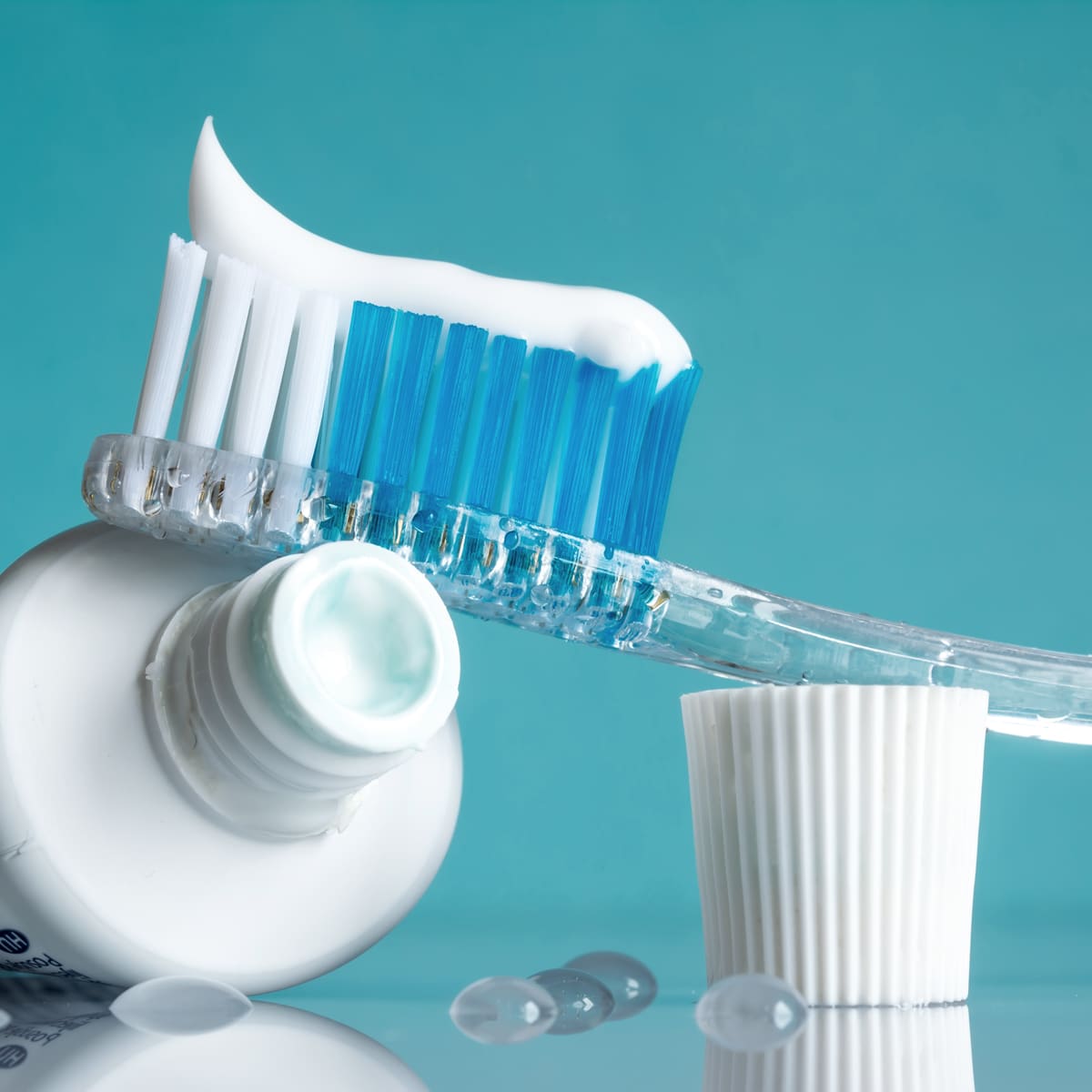
Using fluoride gel
Advantages
- For remineralization of the tooth enamel
- Caries prevention
- Treatment of sensitive tooth necks
Application
- Apply the fluoride gel to the tooth surface once a week with a cotton bud or finger before going to bed
- Leave on for 2 minutes and then spit out
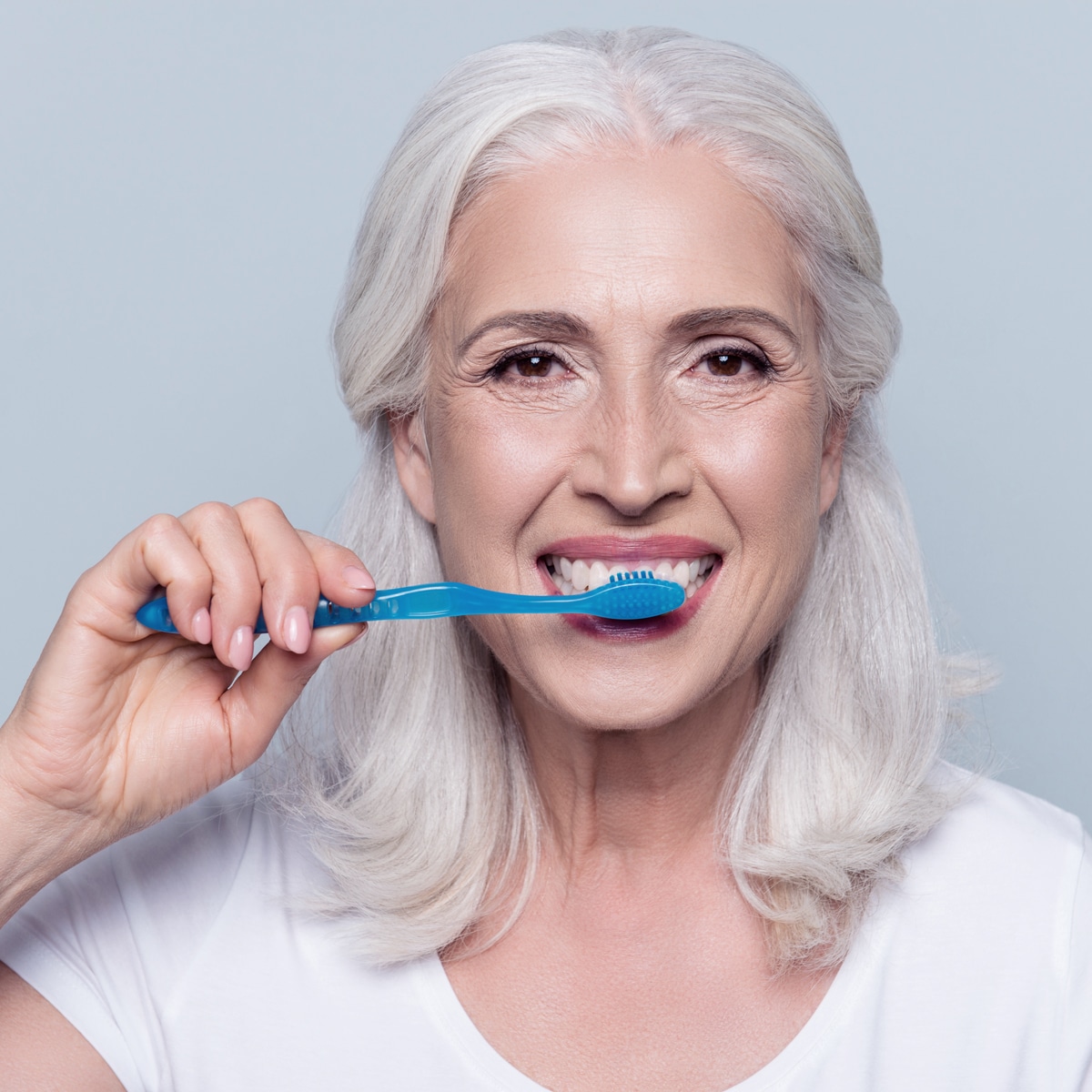
Brush your teeth properly - Bass technique
All these products will only help you if they are used correctly. The correct way to use a conventional manual toothbrush without an electric motor is the so-called modified bass technique. Here, the toothbrush is first moved over the tooth and gum line in the upper jaw in soft, circular, shaking movements and then moved downwards from the gum over the tooth in a sweeping motion.
The loosened plaque is washed out of the interdental spaces and finally rinsed out of the mouth with water.
How to brush your teeth with the bass technique:
- Place the toothbrush at a 45° angle to the gums and teeth.
- Press the bristles lightly against teeth and gums
- Perform small shaking back and forth movements (approx. half the width of a tooth)
- Perform at least 10 shaking movements per tooth
- Clean teeth systematically, first the outside, then the inside and finally the chewing surfaces.
Alternatively, we recommend an electric sonic toothbrush.

The best time to brush your teeth
As dentists, we are often asked about this. A new study has scientifically proven that bacteria hoard together over a period of 24 hours and then carry out their work with their acids as a digestive product on the tooth enamel via a matrix dressing. Minerals are dissolved out in the process and the first stages of caries have begun. If the patient now succeeds in destroying this bacterial association over and over again with the correct dental care, bacteria are unable to develop their demineralizing effect. Therefore, strictly speaking, it does not matter when the teeth are brushed. Because humans are creatures of habit, it is advantageous to always get into the habit of brushing at a certain time. The ideal time is “before going to bed”.
If I brush once with the right technique, I have already taken a big step towards protecting myself from tooth decay and periodontitis. But the emphasis here is on the word “right”. Because if I don’t manage to use the correct technique once a day with a toothbrush, dental floss or interdental brushes, even brushing my teeth several times a day will not protect me from tooth decay. It is generally advisable to start brushing your teeth half an hour after eating at the earliest. A small brush head and always using new brushes are another important tip for correct dental care for lasting dental health.
Dental advice
If you have any questions or would like advice on optimal dental care, we will be happy to help you personally as your dentist in Constance or your dentist in Bietingen. We look forward to your visit!

and the Dr. Hager team
Frequently asked questions about brushing your teeth properly:
We often hear these questions in our practice:
How to brush your teeth properly?
Brushing your teeth daily (at least twice, preferably in the morning and evening for approx. 2-5 minutes) is essential for healthy oral flora. It is also particularly important to clean between the teeth at least once a day. Electric toothbrushes do the work for you, but with manual toothbrushes you can achieve just as good results with a little more time.
When should I brush my teeth and how often?
Quite simply: right once in 24 hours. But what does right mean? It’s worth finding out at your next dental cleaning.
Therefore, the more times a day I brush, the better. No, it is enough to destroy the bacterial associations once every 24 hours. It usually helps people to do things out of habit. This also applies to brushing your teeth. Brushing in the evening before going to bed is generally a useful option.
Is the electric toothbrush better for me or the conventional manual toothbrush?
An electric toothbrush can help to better reach plaque in hidden areas and still ensure that the movements of the small brush head are circular. However, an electric toothbrush, like an ultrasonic toothbrush, does not guarantee that you will not develop tooth decay. If you manage to brush thoroughly over the gums and teeth with light pressure and use dental floss or brushes on a daily basis, nothing will usually happen to your teeth.
Am I cleaning properly if it foams a lot?
No, foaming toothpaste is not an indication of correct brushing.
Am I brushing incorrectly if I have exposed tooth necks?
You may not be able to clean both sides identically with your cleaning hand. You then tend to brush one side too hard. This can cause the gums to recede, leaving the tooth necks exposed. The reason for the pain is that the enamel, which protects against external irritants, does not completely cover the root. If the gums disappear, dentin is exposed. Dentin itself does not provide adequate protection against stimuli such as cold or heat. This results in pain caused by the nerve processes inside the tooth.
Should I use dental floss or interdental brushes?
It is advisable to use interdental brushes in most situations. They have the advantage of not injuring the gums by slipping in, as is the case with dental floss. In addition, the bristles are able to unfold again in the space between the teeth and thus also safely remove these bacteria, which are located in the anatomical retraction of the tooth. Dental floss usually helps in the very narrow spaces between the front teeth on the lower jaw.
Waxed or unwaxed dental floss?
Waxed dental floss has the advantage of slipping better between the teeth and unraveling less than unwaxed dental floss. Studies show that there are no medical advantages to waxed or unwaxed dental floss. It therefore depends on the patient’s daily oral hygiene as to which product they choose for their dental care and the daily, thorough cleaning of their teeth.
When can I brush my teeth properly again after wisdom tooth surgery?
After an operation you should brush your teeth as well as possible, but do not touch the operation area. If necessary, rinse with chlorhexamed solution for the first few days. After the stitches have been removed, you can also brush your gums again after consulting your dentist.
When should babies start brushing their teeth?
As soon as the first tooth appears, it should be brushed with a baby toothpaste. In the first years of life, toothpastes with 500ppm fluoride are recommended. Please read the package insert for the dosage.

